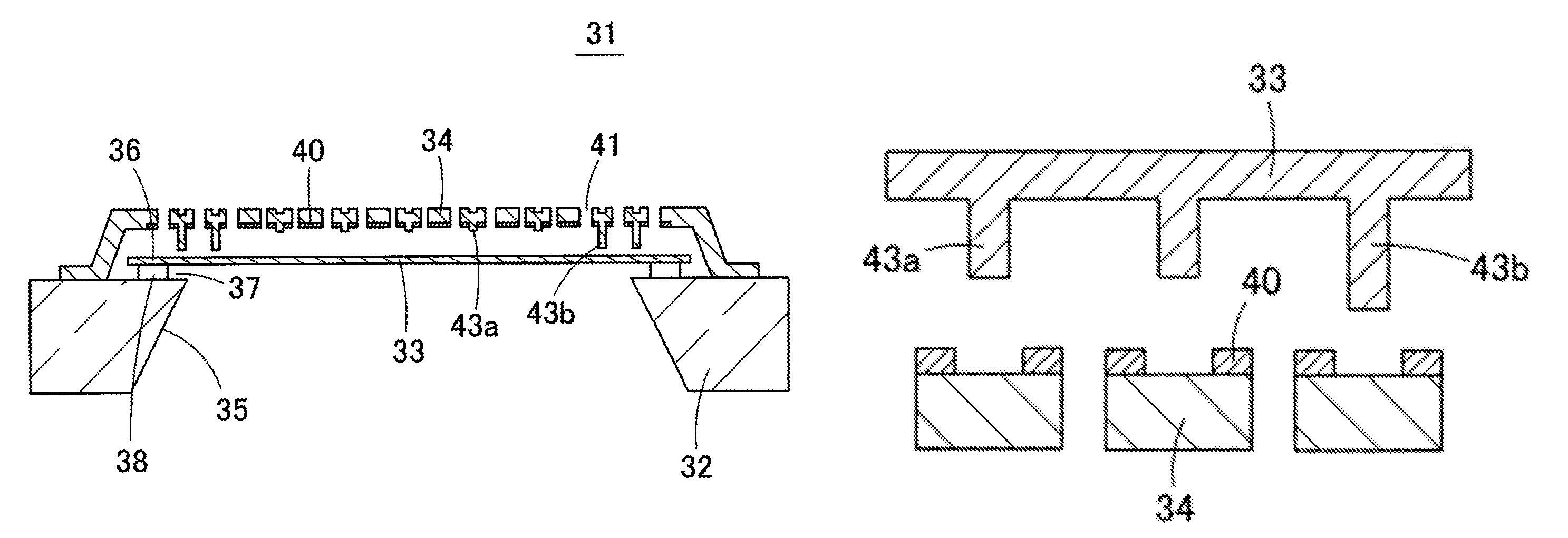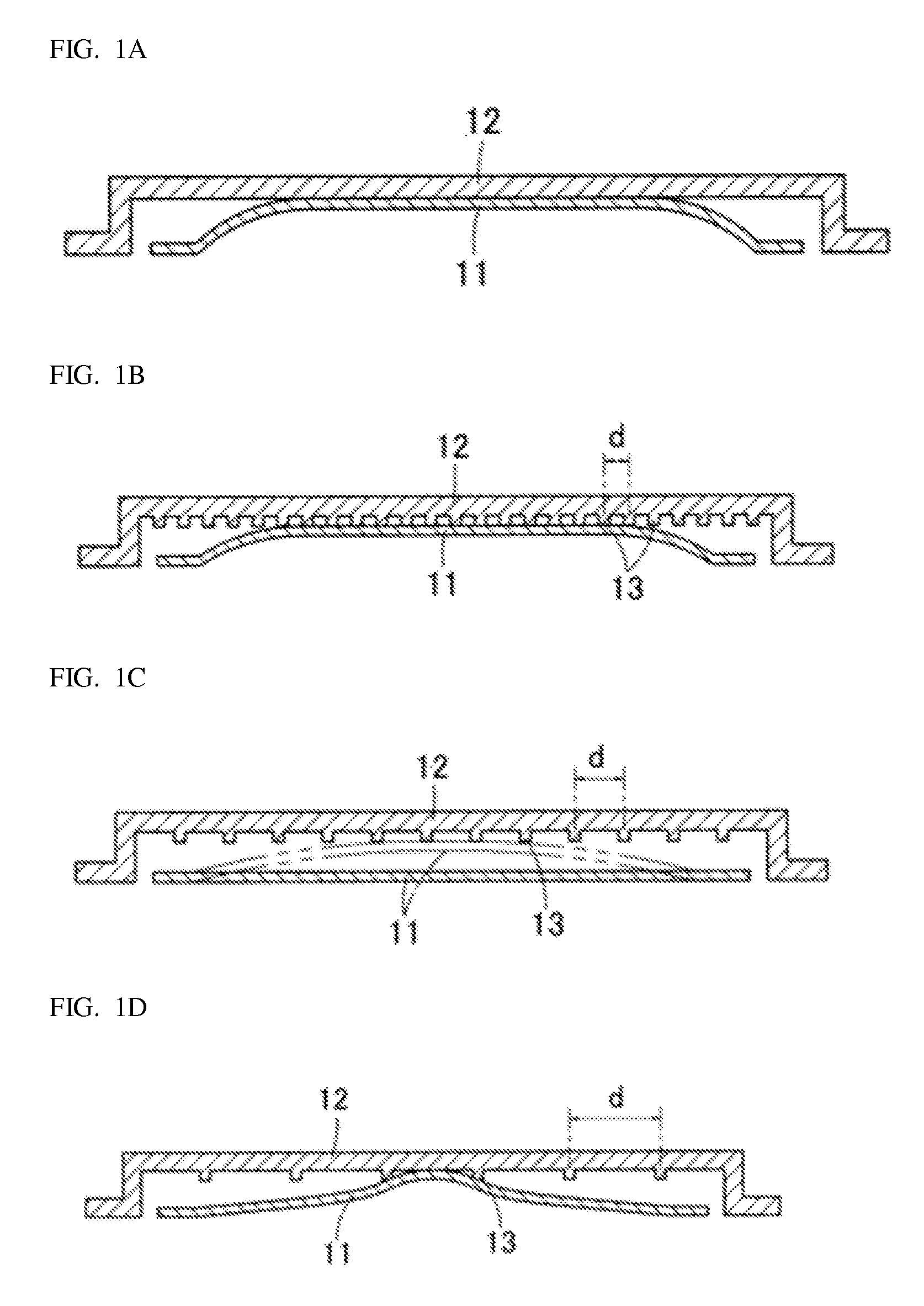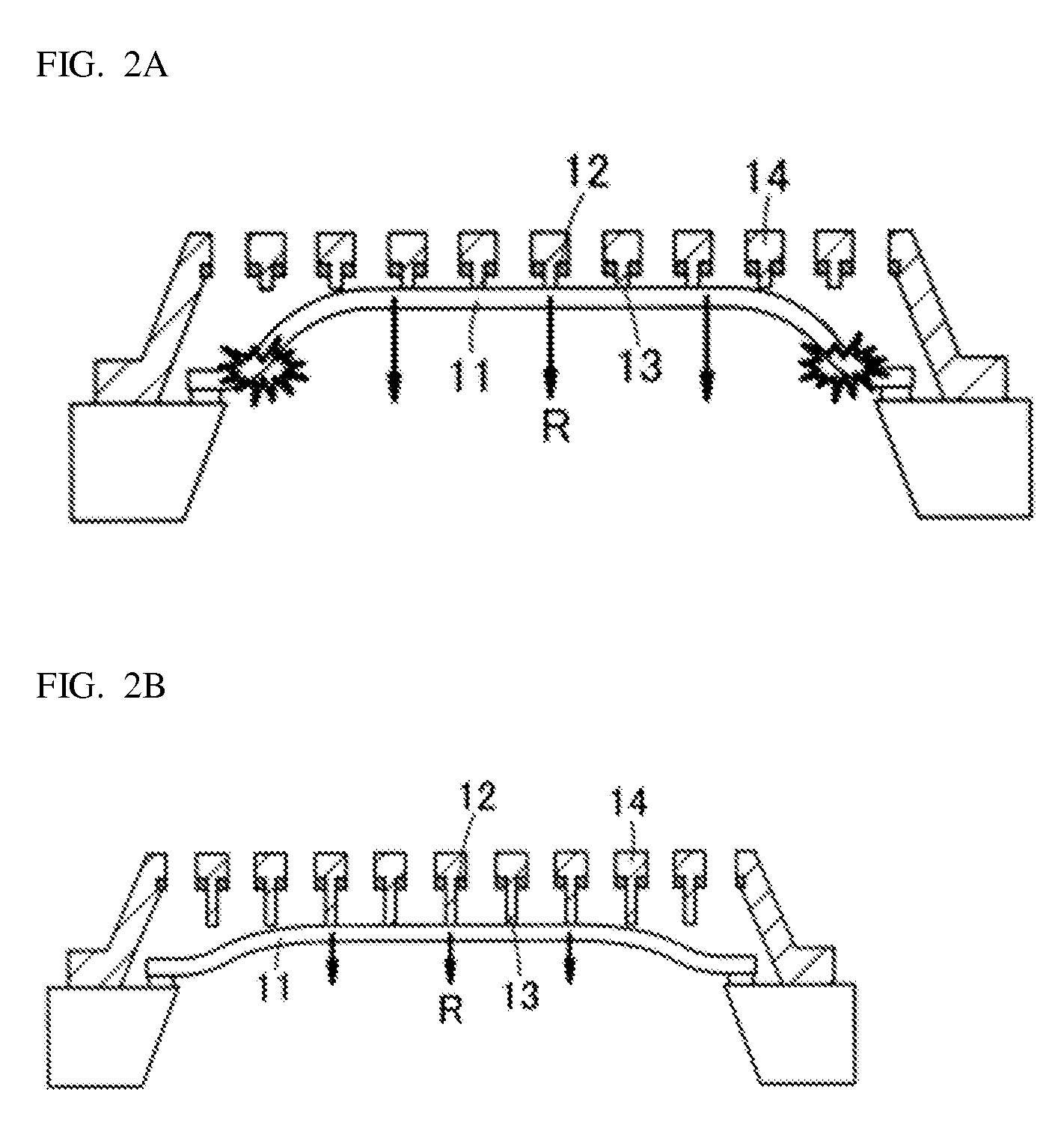Capacitive transducer
a capacitive transducer and acoustic sensor technology, applied in the direction of solid-state device transducers, electrostatic transducers of semiconductor electrostatic transducers, loudspeakers, etc., can solve the problems of no longer detecting acoustic vibration, no longer able to detect acoustic vibration by acoustic sensors, and a large amount of stress, so as to improve the anti-sticking property and improve the anti-breaking property
- Summary
- Abstract
- Description
- Claims
- Application Information
AI Technical Summary
Benefits of technology
Problems solved by technology
Method used
Image
Examples
first embodiment
[0060]The structure of an acoustic sensor 31 according to the first embodiment is described with reference to FIG. 3 to FIG. 5. FIG. 3 is a plan view illustrating the acoustic sensor 31 according to the first embodiment. FIG. 4 is a schematic cross-sectional view of the acoustic sensor 31. FIG. 5 is a plan view illustrating the shape of a diaphragm 33 (movable electrode) formed over the upper surface of a substrate 32.
[0061]The acoustic sensor 31 is a capacitive transducer manufactured using MEMS technology. A movable electrode, that is the diaphragm 33 is formed on a substrate 32 such as a silicon substrate in the acoustic sensor 31, as illustrated in FIG. 4; a back plate 34 is provided above the diaphragm 33 with a minute air gap (space) interposed therebetween.
[0062]A cavity 35 is opened in the substrate 32 passing through from the front surface to the underside of the substrate. The cavity 35 may be formed as a back chamber- or a front chamber depending on how the acoustic senso...
second embodiment
[0103]FIG. 17 is a cross-sectional view of an acoustic sensor 71 according to a second embodiment. In the second embodiment, the stoppers 43b are thicker (a larger diameter) than the stoppers 43a. The stress concentrates at the portion of the stoppers 43b in contact with the diaphragm 33. Therefore it is desirable to ensure that the long stoppers 43b have a larger diameter, thereby increasing the contact surface area of the stoppers 43b and dispersing the stress at the contact surface.
third embodiment
[0104]FIG. 18 is a cross-sectional view of an acoustic sensor 81 according to the third embodiment. In the third embodiment, the short stoppers 43a are provided in a region opposite the center portion of the diaphragm 33, long stoppers 43b are provided at a location opposite the outer peripheral region of the diaphragm; and stoppers 43c longer than the stoppers 43a but shorter than the stoppers 43b are provided in the annular region sandwiched between the central portion and the outer peripheral region on the diaphragm. Increasing the variations to three types of protruding lengths increases the locations of contact when the diaphragm 33 undergoes significant deformation; the increased locations of contact also disperse the stress that concentrates on the stoppers 43a, 43b, 43c, and the anchor 38 to thereby prevent breakage at the stoppers 43a, 43b, 43c, or the diaphragm 33 or the anchor 38, and the like.
[0105]FIG. 19A to FIG. 19C illustrate a portion of manufacturing processes used...
PUM
 Login to View More
Login to View More Abstract
Description
Claims
Application Information
 Login to View More
Login to View More - R&D
- Intellectual Property
- Life Sciences
- Materials
- Tech Scout
- Unparalleled Data Quality
- Higher Quality Content
- 60% Fewer Hallucinations
Browse by: Latest US Patents, China's latest patents, Technical Efficacy Thesaurus, Application Domain, Technology Topic, Popular Technical Reports.
© 2025 PatSnap. All rights reserved.Legal|Privacy policy|Modern Slavery Act Transparency Statement|Sitemap|About US| Contact US: help@patsnap.com



